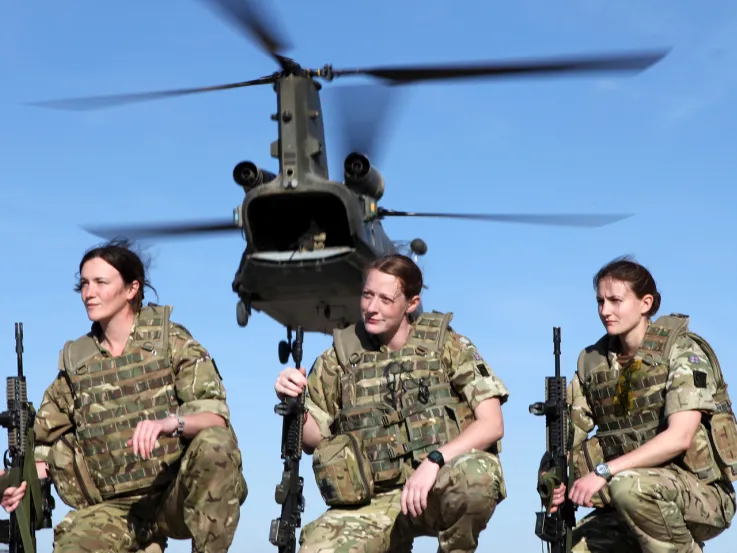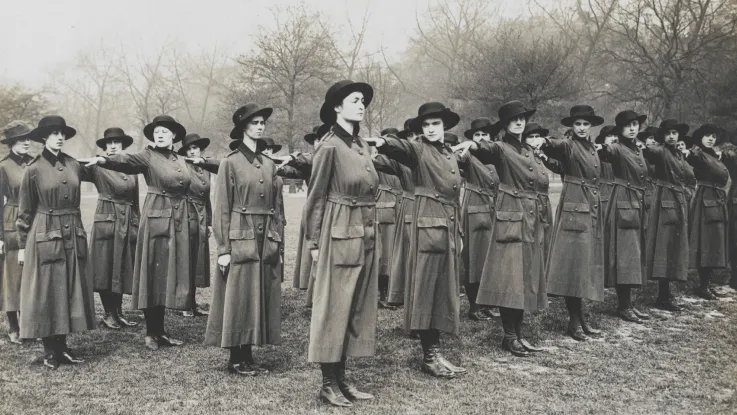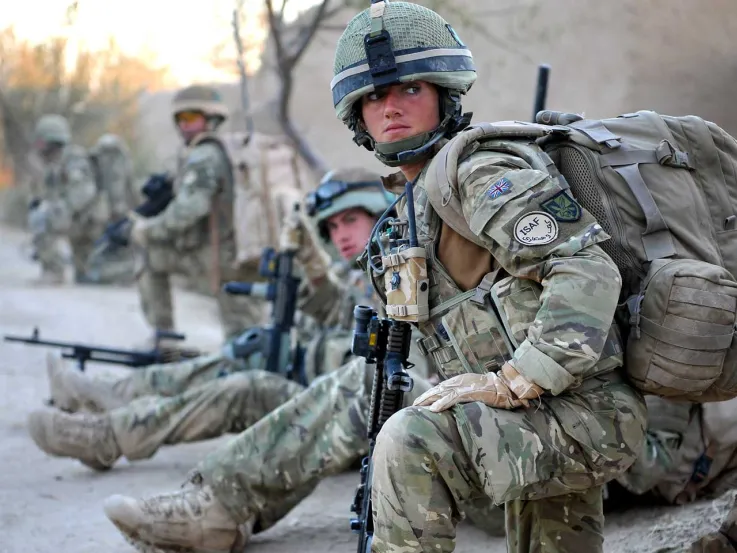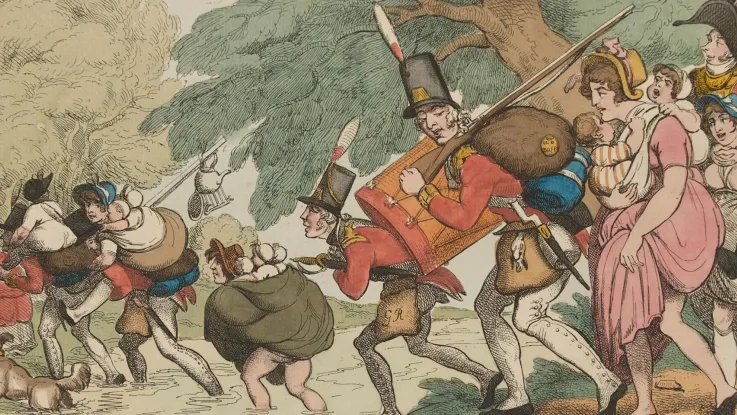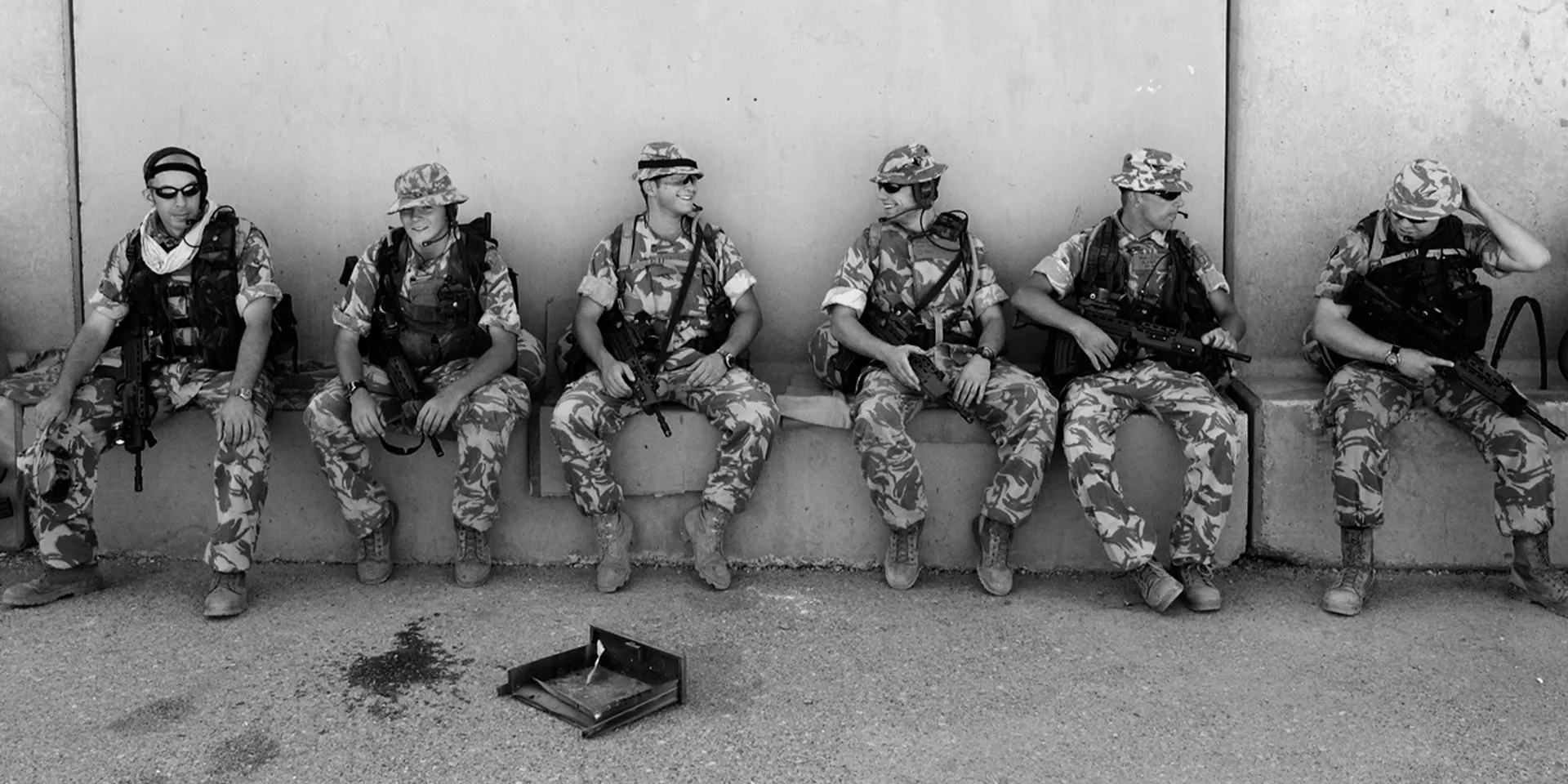
Soldiers of 1st Battalion The Cheshire Regiment, Iraq, 2004
Gender wars
Over the past decade, gender equality has been an increasingly live issue for the Army. This culminated in 2018 with the restriction being lifted on women serving in front-line infantry and special forces close-combat roles.
Previously, the exclusion of women came down to two issues of operational effectiveness. The first was unit cohesion: the idea of ‘doing it for your mates’, the very thing that soldiers say keeps them motivated. The second was the physical demands of ground combat roles.
Women are now eligible to deploy on foot over difficult terrain, carrying substantial weight, and engage in close-quarter fighting. This, on repeat, over an extended period of time, is an essential function of the Army and requires intense and very real endurance.
An international angle
But, despite the fact that women have been performing front-line jobs in the British Army for decades, some people continue to question their presence in close-combat roles. And it’s not only the British who are under scrutiny.
The United States military opened up all roles to women at the end of 2015. A US Marines task force was put to the test in a year-long study into the effects of gender integration. The results showed that all-male units outperformed integrated units. And women were six times more likely to be injured during training than their male counterparts. Studies like this continue to feed the debate.
‘Celebrated as a hero in adventure stories telling of his dangerous and daring exploits, the soldier has become a quintessential figure of masculinity.’Graham Dawson, from his book 'Soldier Heroes' — 2013
A masculine military ideal?
The Army has always been influenced by the social and religious morality of the time. For centuries, the ideal soldier was strong, brave, male and straight.
But throughout the Army's history there have been instances of supposedly transgressive behaviour. Some activities, such as cross-dressing, were tolerated; others, like homosexual relationships, were not.
Specific examples are difficult to trace and remain largely hidden or unrecorded. They were not officially noted and rarely appeared in the letters of soldiers. No doubt, there was anxiety about the repercussions of conduct deemed to be at odds with organisational demands, as well as the law of the land.
It was not until 1967 that homosexuality was decriminalised under the Sexual Offences Act. And, even then, the ban on gay men and women serving in the armed forces was only lifted in 2000.
‘We knew what went on but we didn’t go out to look for it… Obviously it went on. You can’t have eight hundred troops living together and something like that not being practised.’Sergeant-Major Dugald McIver, The Highland Light Infantry — 1920
Punishment
When transgressions were uncovered, they were harshly dealt with. Between 1796 and 1825, 20 soldiers were accused of crimes ranging from sodomy to ‘indecent conduct’; three were hanged.
Fear that homosexuality would interfere with the chain of command meant eight officers and 153 men were court-martialled for ‘indecency’ after being caught in same-sex encounters during the First World War (1914-18).
Control
In order to maintain operational effectiveness and enforce uniformity, the Army has always kept soldiers in check.
It polices many aspects of soldiers’ lives - what they can wear and do in their spare time, their freedom of movement, as well as their sexual practices. This instils a notion of what makes a ‘good soldier’.
Against this cultural backdrop, it’s little surprise that some believed that sanctioned diversity - including the full acceptance of women and members of the LGBTQ community - would have a negative effect.
‘I served during the time when service personnel were hounded out for their sexual orientation, I wasn't directly affected myself... However, we were all on a warning about what would happen if we were found to be "queer"... Being "straight" wasn't necessarily safe territory. We were all made absolutely aware that the slightest deviation from "normal" would result in discharge, without a reasonable reference.’Barbara Anderson, Women’s Royal Army Corps veteran — 2017
Progress
Today, the Army is lauded as an employer that celebrates diversity. Women make up about nine per cent of the current force. And, in 2016, it reached number 32 in Stonewall's top 100 inclusive employers for lesbian, gay and bisexual staff.
Where once it resisted equality on the grounds of ‘operational effectiveness’, the Army now stakes its claim at the helm of progress.
But what does equality mean for the Army? Its interpretation is still at odds with some versions of equal opportunities. In fact, the armed forces are the only employers to remain exempt from the Disability Discrimination Act.
Certainly, the Army has come a long way in ensuring everyone starts on an equal footing. But what else remains to be done?

Combat Medic Chantelle Taylor, the first British woman to kill in combat, on tour in Afghanistan, 2008




